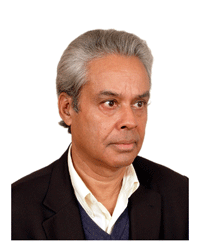Is There Discrimination Against Women in Healthcare in India?
ROME, Sep 05 (IPS) - In an inaugural lecture at the Radcliffe Institute at Harvard University, Amartya Sen began with a swipe at Queen Victoria who complained to Sir Theodore Martin in 1870 about "this mad, wicked folly of 'Woman's Rights'", as in her rarefied world nobody could trample upon her rights. The world has of course changed dramatically and women's rights are widely acknowledged but injustices persist.
Our concern here is with health injustices that are widely prevalent in India. These take multiple forms: female foeticide, widespread morbidity and denial of access to good quality healthcare until a critical condition develops. Our focus here is on vulnerability of women to non-communicable diseases (NCDs) and their limited access to good quality healthcare in India.

NCDs kill 40 million annually, accounting for about 70 % of all deaths globally. NCDs are chronic in nature and take a long time to develop. They are linked to aging and affluence and have replaced infectious diseases and malnutrition as the dominant causes of ill-health and death in much of the world, including India. The major NCDs include cardiovascular diseases, cancer, chronic respiratory diseases and diabetes. These account for 42 % of deaths in India. Some of the risk factors associated with NCDs are aging, unhealthy diet, physical inactivity, smoking, excessive use of alcohol and excess weight.
The burden of NCDs shifted to the older segments of population ( 60 years), highest prevalence being amongst to the oldest men and women ( 80 years+), with higher prevalence among women.
In sharp contrast to women who recorded a significant rise, overall prevalence of NCDs among men fell significantly during 2004-14, based on the National Sample Survey data for India. Men accounted for the majority in 2004, but women did so in 2014. The majority of NCD cases were in the rural areas for both men and women. However, the prevalence among urban women was higher than among urban men in 2014.
There was a significant affluence gradient to prevalence of NCDs among men, with a sharp increase in the prevalence from the lowest expenditure quintile to the highest in 2004. This is similar to what women experienced. A similar pattern is reproduced among both men and women in 2014, but with one reversal. While the prevalence among the most affluent men was higher than among the most affluent women in 2004, the latter recorded a higher prevalence ten years later, in 2014.

An important issue is whether higher vulnerability of women to NCDs manifests in greater access to good quality healthcare. To assess this, we rely on the India Human Development Survey 2015. To assess the quality of health care, we distinguish between two healthcare providers: public hospitals/doctors and private hospitals/doctors. More respondents rank private healthcare providers higher in quality than public providers.
Another proximate indicator of quality is location of healthcare facilities. Quality of treatment received at home and in the same village is often inferior to treatment received in another village/town/district. The point to note is that a village may or may not have a primary healthcare centre but towns and districts are much better equipped with healthcare facilities for specialized treatment of NCDs. So location is another predictor of quality of healthcare.
Public providers were chosen by just under one-third of old women suffering from at least one NCD. In a striking contrast, large majorities –about two-thirds- depended on private providers (excluding traditional faith healers) in 2012. Similar proportions are reproduced for old men. So on this quality criterion, there was little difference between old men and women.
But the distance travelled by women and men reveals a contrast.
Large shares of old women, about 45 %, suffering from at least 1 NCD had their first treatment at home and in the same village. The majority, about 55 %, travelled to another village/town/district. Large shares of men suffering from 1 NCD, about 40 %- were treated at home and in the same village while the majority, about 58 %-travelled to another village/town/district.
From this perspective, the fact that larger shares of women received treatment at home and in the same village than men with a chronic NCD suggests that women had lower access to costlier and more specialized treatment despite their greater vulnerability to NCDs; however, the difference between men and women in their reliance on private providers is not significant.
In brief, while women are more prone to NCDs, their access to costlier and more specialized healthcare is lower than that of men. So the evidence favoring discrimination against women in good quality healthcare is limited but suggestive of a bias.
Social and family norms that restrict women's access to health care are not as rigid as generally believed. Greater awareness of equity and better recognition of women's contribution to household and social welfare could enhance their access to health care. Besides, outside employment options for women with some bargaining power (eg, high school education) could reinforce their autonomy.
Farhana Haque-Rahman, a journalist and communications expert, is a former senior United Nations official and
Raghav Gaiha is Visiting Scholar, Population Studies Centre, University of Pennsylvania and (Hon.) Professorial Research Fellow, Global Development Institute, University of Manchester, England.
© Inter Press Service (2019) — All Rights ReservedOriginal source: Inter Press Service
 Global Issues
Global Issues